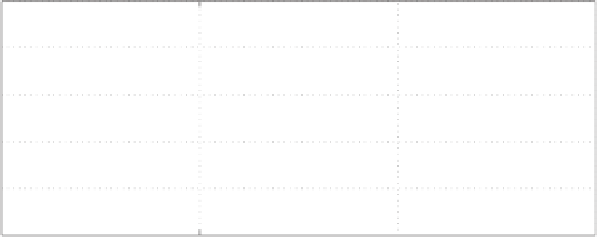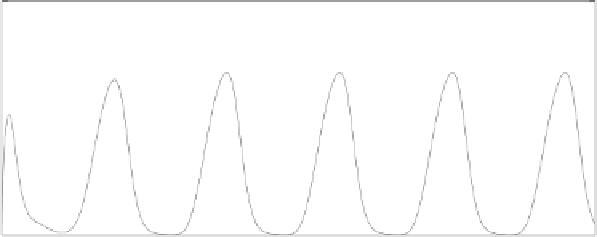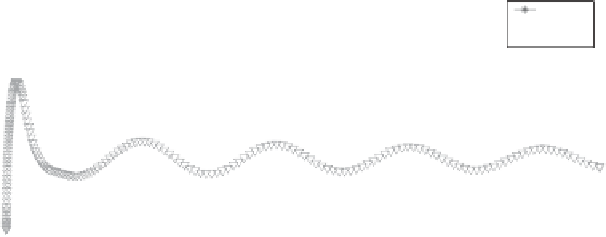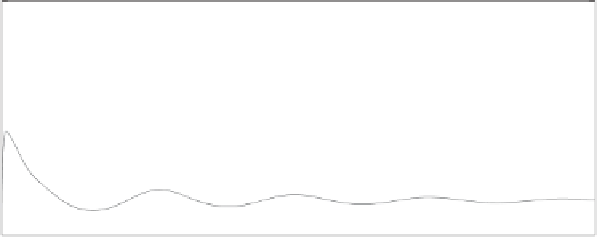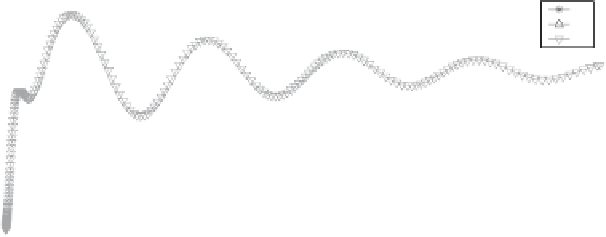Information Technology Reference
In-Depth Information
Dynamic behavior of ring oscillators with modified repressor binding efficiencies
0.05
orig
mod X3
mod X5
0.04
0.03
0.02
0.01
0
0
50
100
150
time (x100 sec)
Figure 4.15
Dynamic behavior of ring oscillators with modified repressor binding
coefficients.
repressor is sufficient to inactivate the corresponding promoter. Once the input
of an inverter reaches that threshold, the inverter's output will begin to decay.
The circuit oscillates correctly when the gates are perfectly matched, but
incorrect behavior may result from coupling mismatched components. Fig-
ure 4.16 shows the effect of mismatched inverters on the dynamic behavior
of the ring oscillator. The inverters have different binding coefficients and
transcription rates. Specifically, the values of the kinetic constants
k
rprs(
2
)
and
k
rprs(
4
)
for protein repressor B are now a third of the original
cI
values, and
the value of
k
xscribe
for
C
's promoter is now twice the original. As a result,
the output of the inverter with the strongest transcription rate settles into high,
Dynamic behavior of ring oscillator with mismatched inverters
0.04
A
B
C
0.035
0.03
0.025
0.02
0.015
0.01
0.005
0
0
50
100
150
time (x100 sec)
Figure 4.16
A time-series simulation illustrating the incorrect behavior of a ring
oscillator with mismatched inverters. The second inverter's repressor binding coef-
ficient is three times lower than the original, while the third inverter's transcription
rate is twice as strong as the original.
